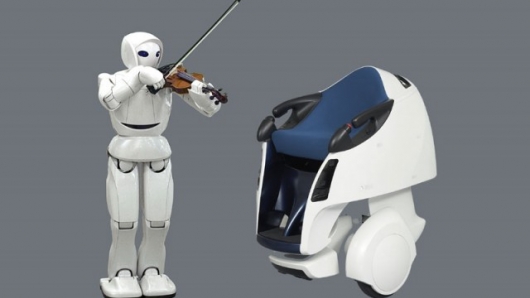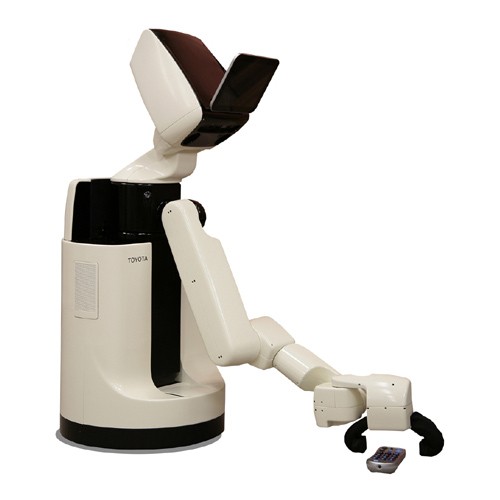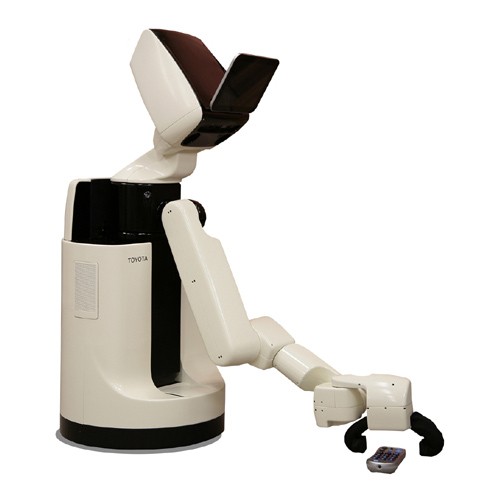Last week we wrote about Baxter, the all purpose robot for small manufacturers. Hard on its heels comes a major manufacturer, known more for its automobiles than robots, Toyota.
Toyota’s new robot is called the Human Support Robot or HSR, and is geared specifically for the disabled people living alone. It seems appropriate that a Japanese manufacturer would be looking to serve this growing market since Japan has the highest percentage of senior citizens of any country in the world.
This isn’t Toyota’s first effort building robots. They have been doing it for a number of years. For example in 2007 they unveiled two robots, one that had the dexterity to play the violin, and the other a personal transporter. But neither were meant to be much more than concepts. The HSR, on the other hand is a serious attempt to address older and disabled individuals living on their own with limited human assistance.

The HSR is controlled through a graphical display or by voice commands. It also can wear a tablet computer on its head that allows remote family members to visually communicate over Skype or other video conferencing tools. Each HSR comes with a robotic arm equipped with a two-fingered gripper. Weighing about 32 kilograms (70 pounds), HSR can pick up and hold objects weighing a little more than a kilogram (2.6 pounds).
HSR is strictly a homebody. Fastest speed is 3 kilometers (1.8 miles) per hour. Like the Roomba robotic vacuum from iRobot, HSR can traverse floors whether carpeted or hardwood. It can climb a 5 degree slope. It is also equipped with stereo cameras and motion and depth sensors.
Since 2011 HSR has been undergoing testing at a rehabilitation centre in the city of Yokohama. Toyota intends to unveil HSR publicly between September 26 and the 28 at a health care conference in Tokyo. Interestingly, the Japanese public health insurance will cover 90% of the cost of a robot helper like HSR anticipating that such devices are very much needed for an aging population.










